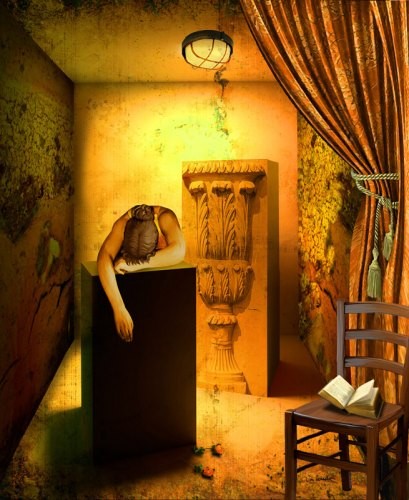Last April the Finance Ministry, the latest gallery to open in Buenos Aires came casualty to yet another case of high profile art fraud. On 26th April 2016, the 40 paintings that made up an exhibition of artist Antonio Bernis work were seized, after it was revealed that these paintings which were thought to be produced by a great master were in fact high-profile forgeries. Altogether the police captured an astonishing 240 paintings, each of them with a fake certification to imitate authenticity. Rather than shy away from publicity, the gallery owner used the incident as a way to highlight the prevalent and criminally profitable world of art fraud that is negatively affecting the industry of buying and selling artwork.
The History of Forgery
Art forgery is the act of producing artwork for sale, falsely credited under another artists name for profit. In its basic form, this practice has been going on for years, with the Roman sculptors mimicking the style of their Greek counterparts to create copycat pieces. Although not considered forgery as such, artist’s apprentices during the renascence would learn their craft by producing work in the style of their master. These works were signed off and sold by the master who’s work was imitated as payment for the training, resulting in many paintings mistaken as being produced by the named artist later on in its lifetime.
Those seeking to make huge profits from their forged artworks would often take the risk to reproduce famous pieces by many well-known artists – Picasso, Dali and Vincent Van Gogh stand as some of the most reproduced artists in the world. Although a main motive for this trade is of course the large amount of money to be made, some artists (once caught) claim they do so as a hoax, to expose the credulity or exclusiveness of the art world.
Mysterious Motives
There can be huge negative implications for any artist whose work is mimicked by a forger, losing out on profit that is righty theirs, however one unusual case in history presents a rare case of art forgery to mutually benefit the original artist. This unusual tale lands with no other than the Surrealist innovator, Salvador Dali.
As mentioned previously, paintings by this well-known artist are highly sought after, and whole industries have formed in producing fraudulent works by the artist – yet many of these artworks may have in fact been consented by the painter himself. It is rumoured that Dali’s friend and creative companion Antoni Pitxot began painting as the surreal master some time after 1968, to continue a steady output of paintings by Dali, as the visionary started to age and his capabilities started to fade. In this case, the motive may not be monetary, but Dali may have allowed this forgery to happen under his watchful eye, in order to maintain his brand that had been carefully built up over time.
Legal Repercussions
However, it still remains that most fine artists fear their work to be the next subject of a fraudulent artists canvas, and galleries are even more so fearful of purchasing such work. Whether or not the curators are in the knowledge that the artwork than don their walls are inauthentic, if fakes are found to be hung on display then the gallery can be shut down immediately, with legal battles resulting. An example of this is the lawsuit which perused after the Knoedler Gallery in New York sold a fake Mark Rothko painting for $8.4 million to then novice collectors, Eleanore and Domenico De Sole. This painting was one in 40 fake Mark Rothko paintings that were sold by the gallery from 1994 – 2008.
The prominence of forged pieces that have come to circulate within the art world can cause loss of income for the original artist, anger to collectors looking to invest in genuine pieces, with negative public image and legal implications to the galleries that sell the fake artwork.
Protecting against forgery in an online world
As the art retail landscape is developing and more online art galleries are becoming popular, it can seem that, for forgers, it is easier than ever to sell fake artwork online to unsuspecting buyers. If highly detailed and specialised paintings can be imitated convincingly, then a certification of authenticity is also not hard to create.
For art buyers who enjoy the advantages of buying online, there are ways to protect against purchasing forged artwork. At Art2Arts, our online art gallery platform allows the collector to purchase art directly from the artist, with many creatives selling their work themselves through the peer-to-peer format. Unlike conventional galleries, using the Internet also means that buyers can read customer reviews from previous clients of the gallery to judge for themselves the reputation of the organisation. Ultimately, an online art gallery can promote a much more honest and open culture when it comes to buying and selling artwork, to the mutual benefit of the artist and collector alike.
Have you been effected by the fight against forgery? How do you know where to trust buying your original art online? Do let us know in our comments or on social media – we would love to hear your thoughts!




